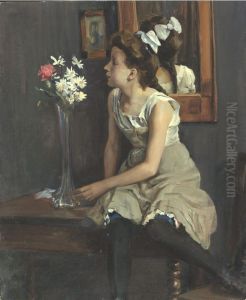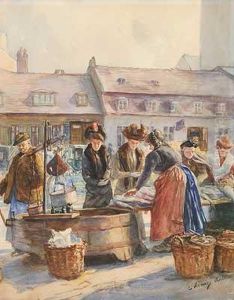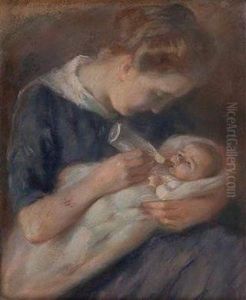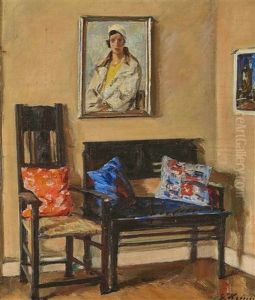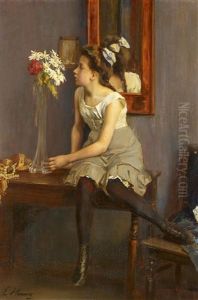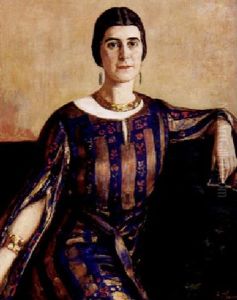Erich Hennig Paintings
Erich Hennig was a German artist known for his contributions to the fields of painting and graphic design throughout the 20th century. Born in 1882 in Germany, Hennig's early life was marked by an immersion in the rich cultural and artistic heritage of his homeland, which would later influence his artistic direction. Despite the challenges posed by the socio-political upheavals of his time, including two World Wars and the interwar period that significantly impacted artists in Germany and across Europe, Hennig managed to carve out a distinctive path for himself in the art world.
His work, which spanned several decades, was characterized by a dedication to exploring the boundaries of visual expression, moving seamlessly between realism and abstraction. Hennig was particularly noted for his innovative use of color and form, which he employed to capture the essence of his subjects, whether in his graphic designs or in his paintings. Throughout his career, he was deeply influenced by the major art movements of the 20th century, including Expressionism and Cubism, yet he maintained a unique voice that resisted easy categorization.
During the 1920s and 1930s, Erich Hennig's work began to gain recognition beyond Germany, with exhibitions in other parts of Europe and eventually in the United States. His graphic designs were especially celebrated for their originality and were seen as ahead of their time, blending traditional techniques with a modernist sensibility. Despite the increasing recognition, Hennig remained dedicated to his artistic vision, often prioritizing creative expression over commercial success.
The post-World War II period marked a new chapter in Hennig's career, as he became involved in the reconstruction of German cultural life. He was instrumental in the revival of the German art scene, mentoring young artists and participating in efforts to rebuild the country's artistic institutions. His contributions during this time solidified his legacy not only as a talented artist but also as a key figure in the recovery of German culture following the devastation of the war.
Erich Hennig passed away in 1975, leaving behind a body of work that continues to be celebrated for its innovation and beauty. His art remains on display in museums and galleries around the world, serving as a testament to his enduring influence on the development of modern art. Through his creative journey, Hennig demonstrated a remarkable ability to adapt and evolve, reflecting the turbulent history of the 20th century while also transcending it through his timeless creations.
